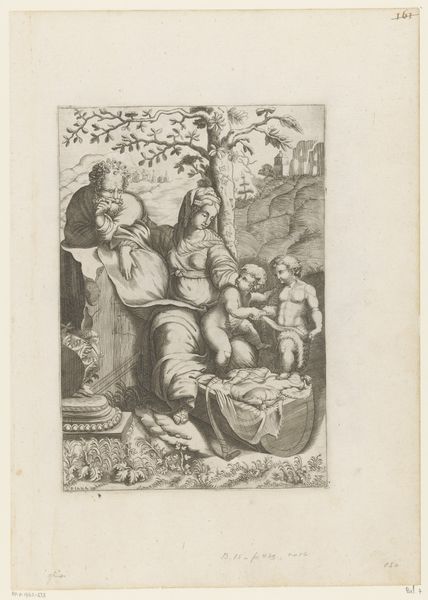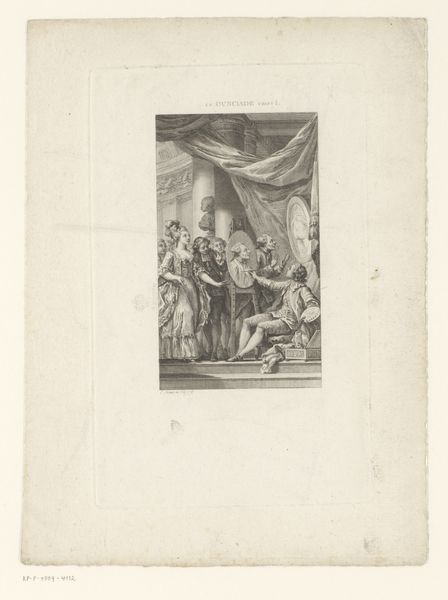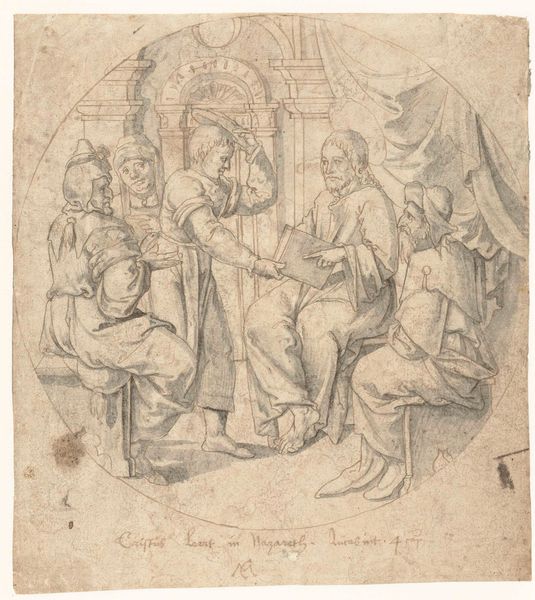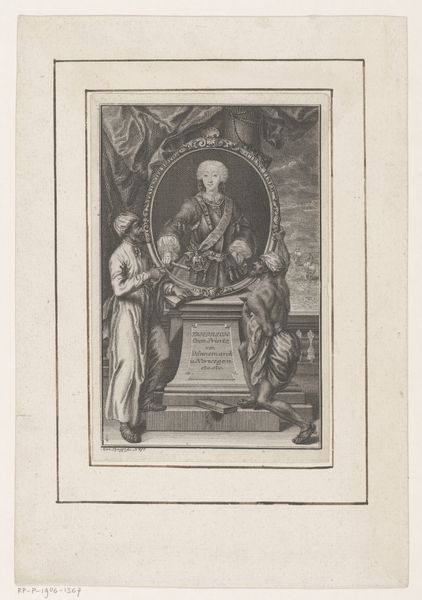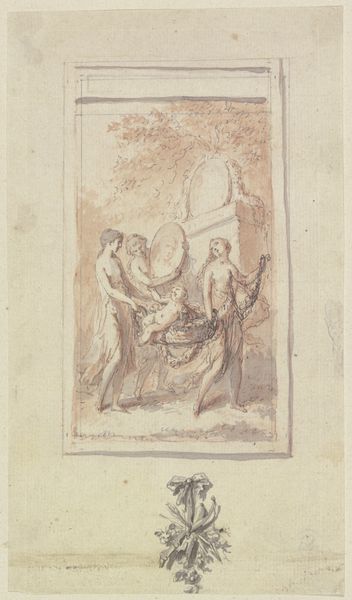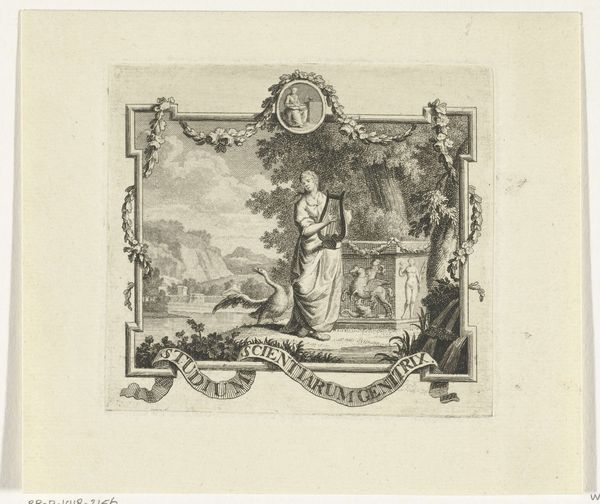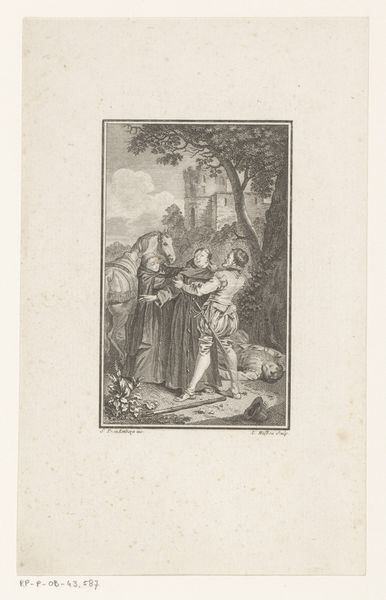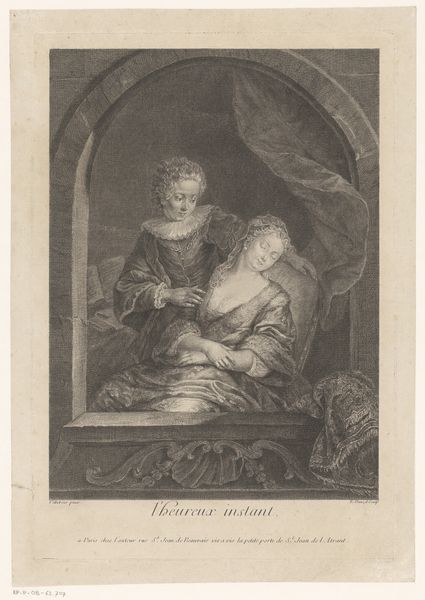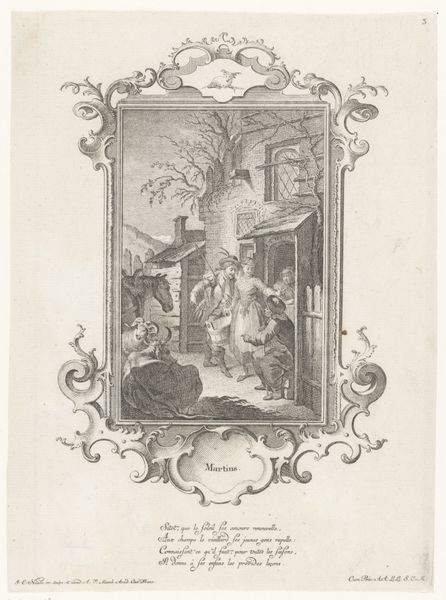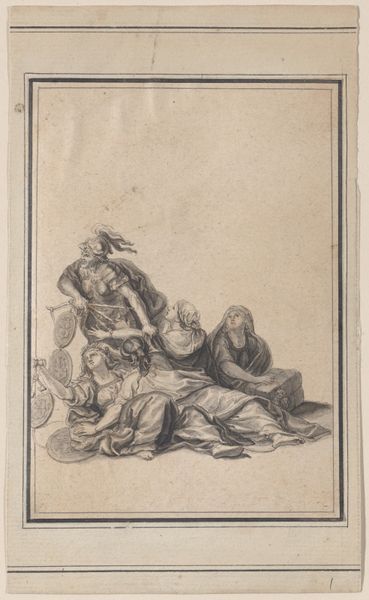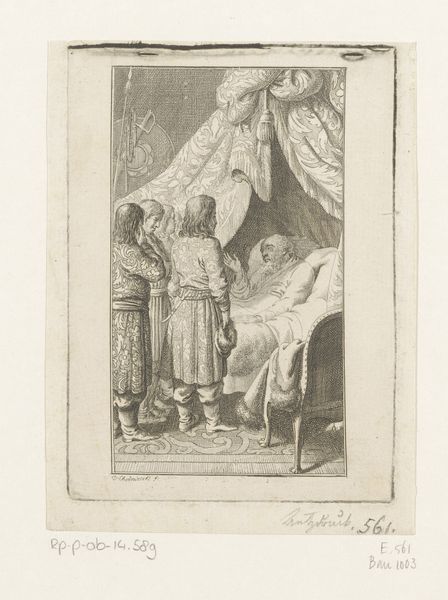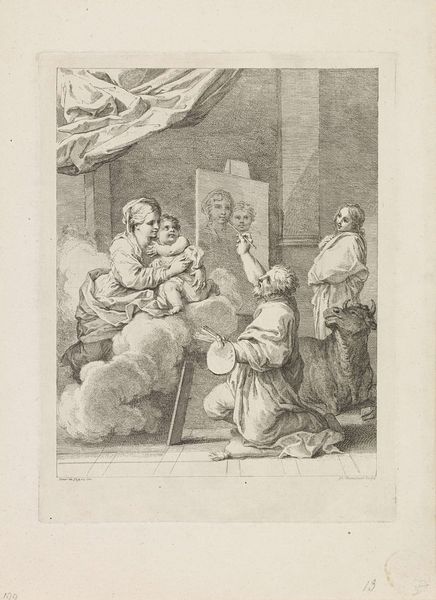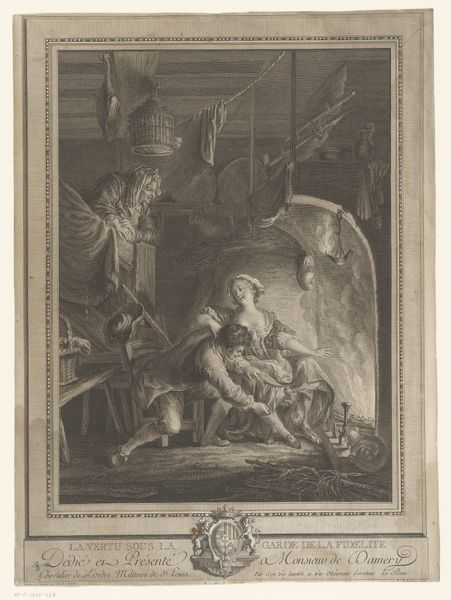
drawing, engraving
#
portrait
#
drawing
#
toned paper
#
light pencil work
#
baroque
#
pen sketch
#
pencil sketch
#
personal sketchbook
#
ink drawing experimentation
#
pen-ink sketch
#
pen work
#
sketchbook drawing
#
pencil work
#
history-painting
#
engraving
Dimensions: height 345 mm, width 292 mm
Copyright: Rijks Museum: Open Domain
Editor: This is Wilhelm Christian Rücker's "Portret van Hugo Franz Carl von und zu Eltz-Kempenich", made sometime between 1700 and 1774, and it appears to be an engraving. The detail is incredible! It has such an ornate, almost performative feel to it. What jumps out at you when you look at it? Curator: For me, this print offers a glimpse into the performance of power and identity in the Baroque period. We see this not just in the subject’s clothing and pose, but in the allegorical figures surrounding the portrait, each communicating the status and values attached to Hugo Franz Carl. Have you considered the role of imagery in legitimizing authority at this time? Editor: It's interesting you say that! I was so focused on the artistic style. Are you suggesting the portrait isn't necessarily about the individual, but about reinforcing societal hierarchies? Curator: Precisely! Consider how prints like these were circulated. They functioned almost like today’s political advertisements, shaping public perception and solidifying a particular narrative around the subject. Look at how he's framed, quite literally, within these classical motifs. Editor: I see it now! It's like a carefully constructed stage, designed to present a specific image to the world. Even the penmanship encircling the central oval acts as an ornate form of branding, if you will. Curator: Yes, it underscores the intended message. The cherubs and weeping figures aren't just decorative; they are deliberately employed to construct and transmit meaning within a highly formalized visual language. How does understanding the print's intended function affect your interpretation? Editor: It changes everything! I went from seeing a fancy drawing to understanding its societal role in constructing power dynamics. Thanks! Curator: Indeed, and hopefully encourages all of us to interrogate the power structures inherent in even the seemingly simple images we encounter daily.
Comments
No comments
Be the first to comment and join the conversation on the ultimate creative platform.
